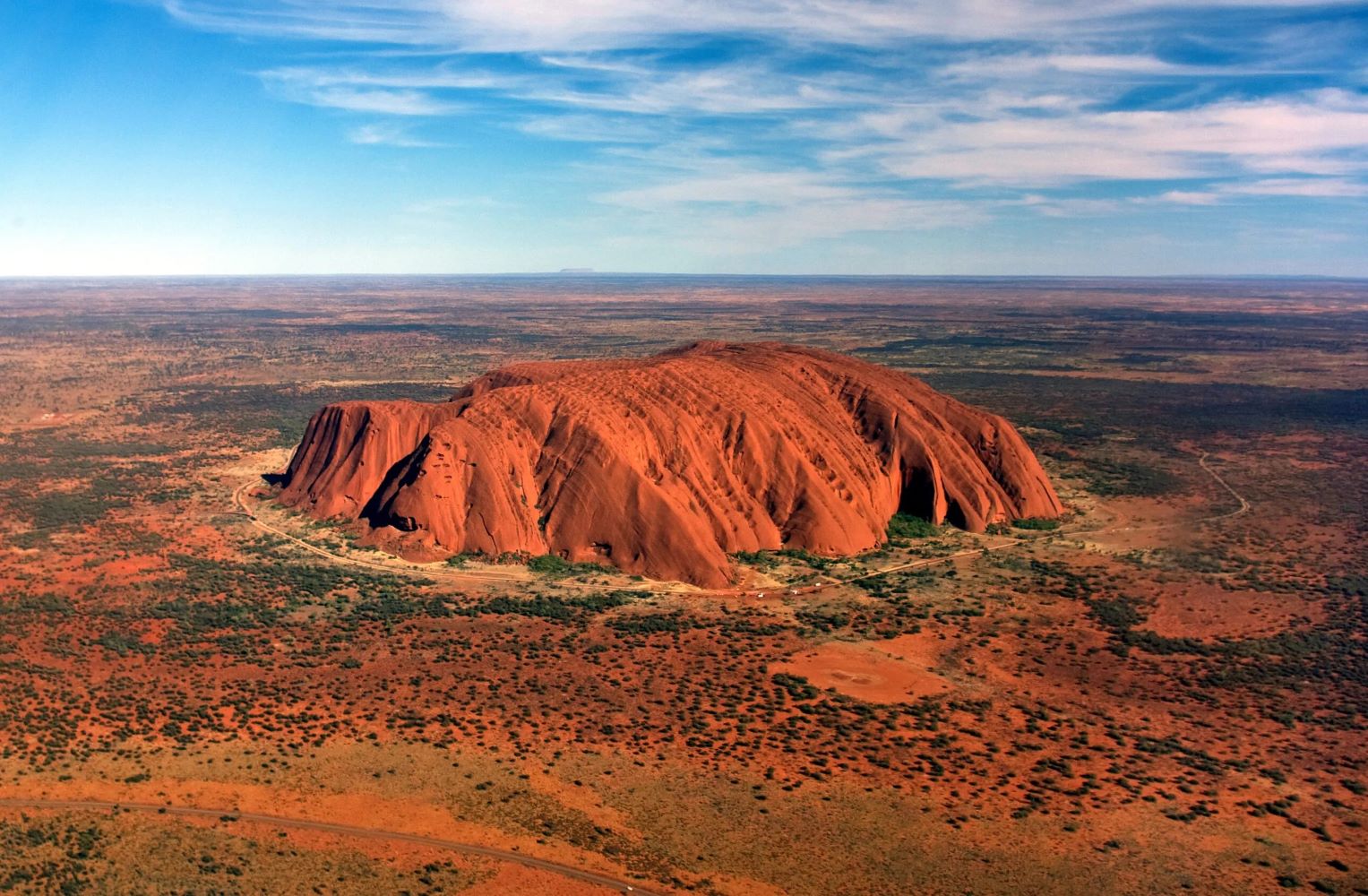
Ayers Rock, also known as Uluru, is one of Australia's most iconic landmarks. But what makes this massive sandstone monolith so special? Did you know that Uluru is not just a rock but a sacred site for the Anangu people, the traditional landowners? Standing 348 meters high, it’s taller than the Eiffel Tower! This natural wonder changes colors throughout the day, glowing red at sunrise and sunset. Uluru is also home to unique flora and fauna, some found nowhere else on Earth. Ready to learn more? Here are 35 amazing facts about Ayers Rock that will leave you in awe!
What is Ayers Rock?
Ayers Rock, also known as Uluru, is one of Australia's most iconic landmarks. This massive sandstone monolith stands proudly in the heart of the Northern Territory's arid Red Centre. Let's dive into some fascinating facts about this natural wonder.
-
Uluru's Height: Uluru stands at 348 meters (1,142 feet) above ground, making it taller than the Eiffel Tower.
-
Underground Roots: The rock extends several kilometers below the surface, with estimates suggesting it goes as deep as 2.5 kilometers (1.5 miles).
-
Color Changes: Uluru appears to change color at different times of the day and year, ranging from deep red to purple. This is due to the angle of the sun and atmospheric conditions.
-
Sacred Site: For the Anangu people, Uluru is a sacred site with spiritual significance. They have lived in the area for over 30,000 years.
-
Climbing Ban: Climbing Uluru was officially banned in October 2019 out of respect for its cultural significance to the Anangu people.
Geological Marvels of Ayers Rock
Uluru's formation and composition make it a geological marvel. Here are some intriguing facts about its geology.
-
Age: Uluru is estimated to be around 550 million years old.
-
Sandstone Composition: The rock is primarily composed of arkose, a coarse-grained sandstone rich in feldspar.
-
Erosion: Wind and water erosion have shaped Uluru over millions of years, giving it its current form.
-
Iron Oxide: The red color of Uluru comes from iron oxide, or rust, on the surface of the sandstone.
-
Tectonic Activity: Uluru was formed during the Alice Springs Orogeny, a period of mountain building caused by tectonic activity.
Flora and Fauna Around Ayers Rock
The area surrounding Uluru is home to diverse plant and animal life. Here are some facts about the unique flora and fauna.
-
Desert Oaks: These trees are common around Uluru and have deep roots to access underground water.
-
Spinifex Grass: This hardy grass covers much of the area and provides habitat for various animals.
-
Perentie Lizards: The largest lizard in Australia, the perentie, can be found in the region.
-
Mala: The rufous hare-wallaby, or mala, is a small marsupial that once thrived around Uluru.
-
Birdlife: Over 170 bird species, including the wedge-tailed eagle, inhabit the area.
Cultural Significance of Ayers Rock
Uluru holds deep cultural importance for the Anangu people. Here are some facts about its cultural heritage.
-
Tjukurpa: This is the traditional law and culture of the Anangu people, encompassing their creation stories and spiritual beliefs.
-
Rock Art: Uluru features numerous ancient rock art sites, depicting stories and events from Anangu history.
-
Ceremonial Sites: There are several sacred ceremonial sites around Uluru, used for rituals and gatherings.
-
Language: The Anangu people speak Pitjantjatjara and Yankunytjatjara, two of the many Aboriginal languages.
-
Tourism Impact: The Anangu manage tourism at Uluru, ensuring that visitors respect its cultural significance.
Environmental Efforts at Ayers Rock
Efforts to preserve and protect Uluru and its surroundings are ongoing. Here are some facts about these environmental initiatives.
-
National Park: Uluru-Kata Tjuta National Park was established in 1958 to protect the area.
-
World Heritage Site: Uluru was designated a UNESCO World Heritage Site for its natural and cultural significance in 1987 and 1994, respectively.
-
Conservation Programs: Various programs aim to protect native species and restore the natural environment.
-
Sustainable Tourism: Efforts are made to minimize the environmental impact of tourism, including waste management and water conservation.
-
Fire Management: Controlled burns are conducted to reduce the risk of wildfires and promote healthy ecosystems.
Mysteries and Legends of Ayers Rock
Uluru is shrouded in myths and legends. Here are some intriguing stories and mysteries associated with this iconic landmark.
-
Creation Stories: According to Anangu legend, Uluru was formed by ancestral beings during the Dreamtime.
-
Cursed Rocks: Some visitors who take rocks from Uluru report bad luck and return them, believing they are cursed.
-
Healing Powers: Some believe that Uluru has healing powers and visit the site for spiritual rejuvenation.
-
Megalithic Structure: There are theories that Uluru is part of a larger, ancient megalithic structure.
-
UFO Sightings: Some people claim to have seen UFOs around Uluru, adding to its mystical aura.
Fun Facts About Ayers Rock
Let's end with some fun and quirky facts about Uluru that you might not know.
-
Temperature Extremes: Temperatures at Uluru can range from freezing at night to over 40°C (104°F) during the day.
-
Tourist Attraction: Over 250,000 people visit Uluru each year.
-
Name Change: The rock was officially renamed Uluru/Ayers Rock in 1993 to honor its Aboriginal heritage.
-
Sunset Views: Watching the sunset at Uluru is a popular activity, with the rock glowing in vibrant colors.
-
Astronomy: The clear skies around Uluru make it an excellent spot for stargazing.
The Magic of Ayers Rock
Ayers Rock, or Uluru, isn't just a massive sandstone monolith in the heart of Australia. It's a cultural icon with deep significance to the Anangu people. This natural wonder stands 348 meters high and has a circumference of 9.4 kilometers. It changes colors throughout the day, glowing red at sunrise and sunset. The rock's surface features ancient rock art that tells stories of the Dreamtime. Despite its remote location, Uluru attracts thousands of visitors each year, eager to witness its beauty and learn about its history. Remember, climbing Uluru is discouraged out of respect for its cultural importance. Instead, explore the base, take guided tours, and immerse yourself in the rich traditions of the Anangu. Ayers Rock is more than just a tourist spot; it's a living testament to Australia's indigenous heritage.
Was this page helpful?
Our commitment to delivering trustworthy and engaging content is at the heart of what we do. Each fact on our site is contributed by real users like you, bringing a wealth of diverse insights and information. To ensure the highest standards of accuracy and reliability, our dedicated editors meticulously review each submission. This process guarantees that the facts we share are not only fascinating but also credible. Trust in our commitment to quality and authenticity as you explore and learn with us.


